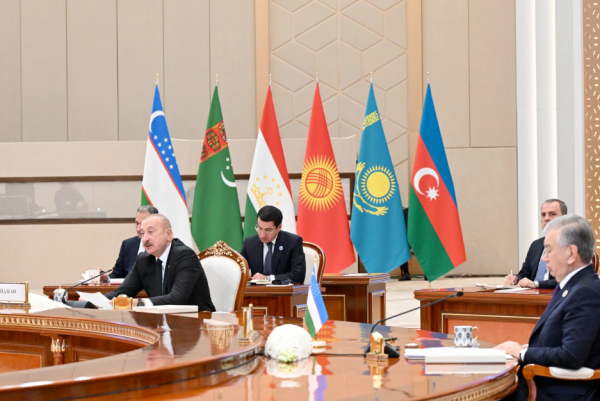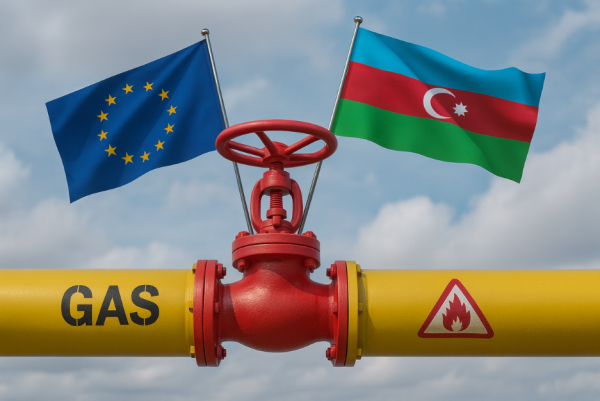Iran’s free trade agreement with the EAEU: Implications for the South Caucasus

On December 25, Iran and the Russia-led Eurasian Economic Union (EAEU) signed a free trade agreement which, after coming into force, will eliminate tariffs on 87 percent of the goods traded between the two sides. This will push total trade turnover from today’s 6 billion USD to 20 billion USD in 5 to 7 years. Adding a new layer to Iran’s ever-growing military-economic partnership with Russia since the latter’s invasion of Ukraine in 2022, the agreement is expected to improve Tehran’s ties with other member countries - Armenia, Belarus, Kazakhstan, and Kyrgyzstan, too. On a global level, the FTA with the EAEU points to the success of Iran’s so-called ‘look east’ policy that envisages deeper ties to Russia and China, among others, to neutralize external pressures emanating from the West against the background of growing geopolitical tensions in the Middle East. In this context, the new agreement is the latest of Iran’s moves to diversify its international linkages in 2023. Previously, on July 4, Iran joined the Shanghai Cooperation Organization (SCO), marking a diplomatic milestone for Tehran’s long-standing attempts to break out of geopolitical isolation. From January 1, Iran will also be a full-fledged member of another international organization bringing together Russia and China - BRICS - a grouping of emerging economies aiming to balance Western hegemony in global affairs.
Tehran signed a three-year interim agreement on a free trade zone with the EAEU in 2018 that came into force on 27 October 2019. In December 2020, the two sides agreed to launch negotiations on a permanent free trade agreement. For a time the issue was on the back burner, taking into account the fact that major economic interests of Iran and the EAEU countries lie elsewhere. However, since Russia’s war of aggression against Ukraine in 2022, a whole lot of new circumstances have been thrown into the mix as Tehran emerged as Moscow’s key partner in its struggle against the West in and out of the battlefield in Ukraine.
Iran’s military supplies to Russia and its geostrategic location providing Russia access to alternative markets have so far proven essential for the Kremlin’s war efforts. Now upgrading the partnership to a new level serves both sides’ interests in alleviating the negative impacts of sanctions and preventing further Western encroachments into the regions of common interests. In the last two years, the South Caucasus region has been one of those places where Tehran and Moscow coordinated their moves to solve regional problems on a regional level, most of the time to the detriment of the interests of the three South Caucasus countries - Armenia, Azerbaijan, and Georgia.
Iran’s membership in the EAEU naturally brings it closer to the South Caucasus. Tehran has a land border with the EAEU member Armenia but the latter’s lack of direct borders with the other member countries is a constraining factor for further economic integration. Taking into account that Armenia’s borders with Turkey and Azerbaijan are still closed, larger access to the Iranian market via an FTA is a boon to Yerevan’s recent economic diversification efforts. It sounds more promising against the background of recent tensions in Armenia-Russia relations in general and disputes in bilateral trade in particular.
Expectedly, the elimination of trade barriers between Armenia and Iran will resurface discussions on the development of an economic corridor linking the Persian Gulf to the Black Sea through Armenian territory. In a joint meeting of the CIS and EAEU officials in Bishkek in October, Deputy Prime Minister of Armenia Mher Grigoryan said an FTA with Iran will help increase not only trade and economic but also logistics and transport ties with Iran. Modernization of the customs checkpoint in Meghri will be the first step in this regard. Armenia may also more actively push for closer connectivity cooperation with Iran and India within the framework of the International North-South Transportation Corridor (INSTC).
Most importantly, easier access to the Iranian market will encourage Yerevan to be more constructive on opening transport corridors with Azerbaijan as has recently been encapsulated in the government’s “Crossroads of Peace” project. Armenia’s sole railway connection with Iran runs through Azerbaijan’s Nakhchivan exclave (Julfa). Using this route would not only facilitate trade between Armenia and Iran but also increase Armenia’s role as a transit country. The road linking Yerevan to Tehran passes through the mountainous Meghri district, a challenging terrain for international connectivity. The rail route through Armenia is also shorter than the road connectivity. From Julfa to Yerevan by rail is 168km while from Meghri to Yerevan by road is 372km. Currently, Azerbaijan is seeking the Iranian route to reach Nakhchivan and Turkey due to Armenia’s alleged disinterest. However, the possible opening of all transport corridors is still on the agenda of the Armenia-Azerbaijan normalization process. With an FTA with Iran, Armenia has another reason to keep engaged in the realization of the Zangezur Corridor.
When it comes to Azerbaijan, the Iran-EAEU FTA may bolster Baku’s pivotal position in north-south connectivity which gained further salience after Russia became increasingly isolated from traditional markets. The Iranian need for reliable trade routes to connect with the EAEU will give a new meaning to the ongoing talks on incomplete projects within the north-south corridor. The lack of rail connectivity between Rasht and Astara has long been the main bottleneck within this route. The opening of the 162km long railroad has been on the cards since 2018 but its realization was delayed due to sanctions on Iran and the lack of interest from major stakeholders. On May 17, Iran and Russia signed an agreement on the completion of the Rasht-Astara railroad. Moscow will invest 1.6 billion USD for the construction of the railway. Recently, Iranian Minister of Roads and Urban Development Mehrdad Bazrpash said Iran will start the construction of the railroad in early 2024. To provide smooth transit of cargo, Tehran needs to improve the throughput capacity of its one-track non-electrified railway system. Railway border crossing points in both countries also need modernization to deal with the delay issues.
For Azerbaijan, besides economic benefits, the deepening connectivity cooperation with Iran has recently become an essential foreign policy tool to compartmentalize relations with an increasingly unpredictable neighbor. In the last two years, bilateral relations went south as Azerbaijan’s victory in the Second Karabakh War shifted the regional balance of power in its favor and strengthened the Turkish and Israeli presence in the region. But after Baku’s assurances that it will not build on its victory to seek further territorial concessions from Armenia, relations seem to be back to normal in recent months. In December, the Iranian foreign ministry declared that the two sides are working on a roadmap to reopen Azerbaijan’s embassy in Tehran. Having an FTA with the EAEU, Iran needs a stable South Caucasus to reap the benefits of regional trade and it is less likely to achieve without having Azerbaijan on board. Similarly, Azerbaijan needs Iranian cooperation to cement the status quo built on its successful restoration of sovereignty over the whole Karabakh region in September.
All in all, the FTA with the EAEU may see bigger Iranian inroads into the South Caucasus region which will be bolstered by Iranian achievements in other geopolitical theatres. The Israel-Hamas war has so far been playing out according to Tehran’s regional designs as it has widened the cracks in Arab-Israeli relations and strengthened the positions of the Iran-backed “axis of resistance” in regional geopolitics. Tehran has also achieved normalizing relations with major Gulf countries that will expectedly afford it resources to better focus on other regions, including the South Caucasus. Last but not least, the further regionalization of international politics in the South Caucasus to keep the West out of the region will give Iran more leverage to shape regional developments. The South Caucasus countries will need to adapt their moves accordingly.







